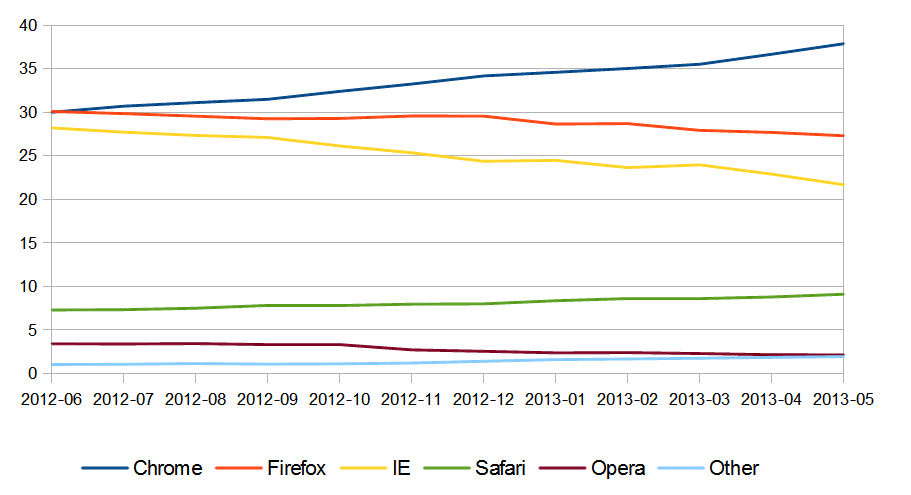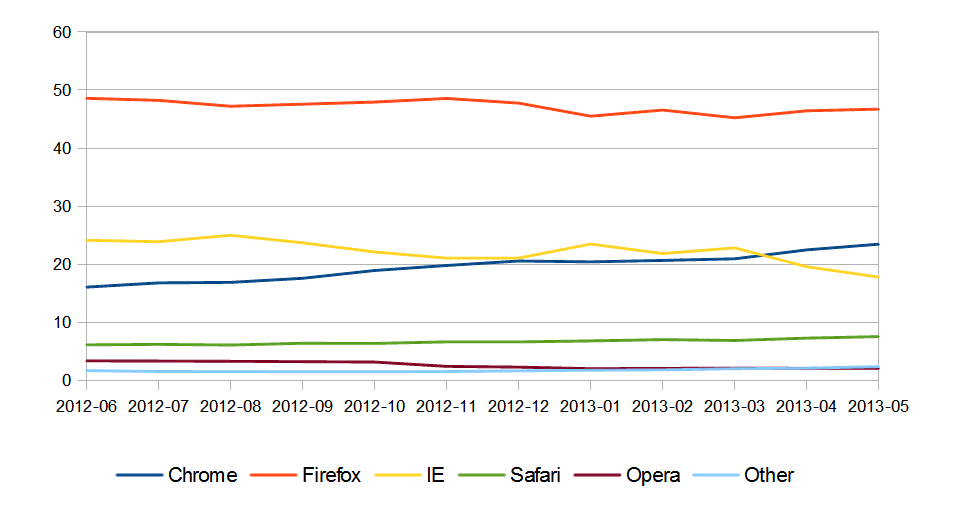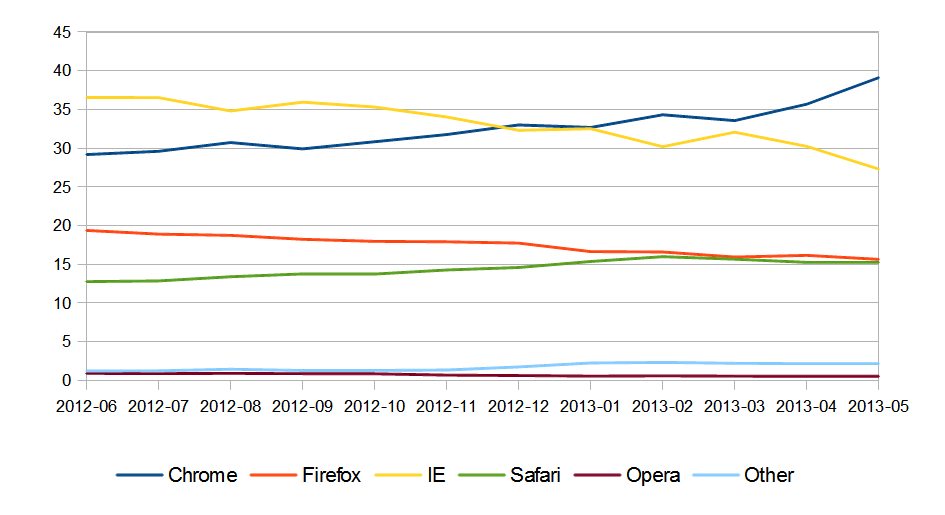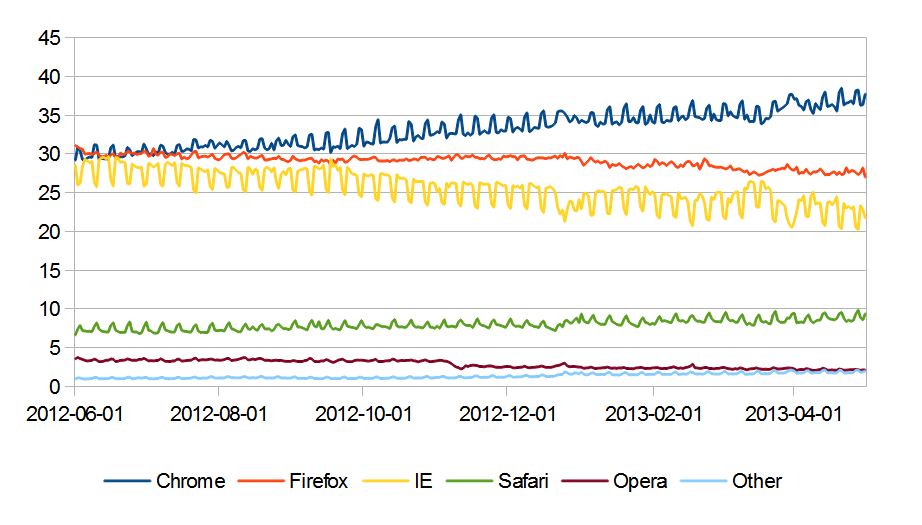Web Browser¶
Requirements¶
Web User Interfaces (WUI) must tested/accepted in:
- Google Chrome 28+
- or Mozilla Firefox 22+.
Due to the specific requirements of the infrastruture provider for PT, WUI should also be tested in:
Rationale¶
In this section, the objective is not to select a web browser, but to establish which web browsers should any Web User Interfaces be tested and accepted in.
Two simple criteria are used in the selection process:
- Browser usage statistics in Europe,
- Feature support and performance
Analysis of alternatives¶
Usage share
Browser usage statistics produced by StatCounter allow the identification of the products with the larger usage share in Europe. Other sources of statistics on the usage share of web browsers are available, but the relative ranking of the products is similar.
Google Chrome is currently the most used browser in Europe (since June 2012). Internet Explorer relative usage share is declining as is, to a lesser extent, Mozilla Firefox’s. However there are marked regional differences, for example, in Europe’s two most populous countries:
- In Germany, Mozilla Firefox is the dominant browser (> 45%), and Google Chrome has only recently (April 2013) surpassed Internet Explorer;
- In the United Kingdom, Google Chrome is the dominant browser with a share similar to Internet Explorer. Mozilla Firefox and Apple’s Safari have similar usage quotas, around 15%.
Alternative version: Dynamic charts on web browser usage statistics)
Relative benchmarking
The current versions of the 3 most common browsers (Chrome, Firefox and IE) can be ranked using the average of their min-max normalised scores on the following ‘feature support’/’performance benchmark’ tests:
- HTML5 test
- SunSpider (Version 1)
- Octane (Version 1)
- Kraken (Version 1.1)
- Peacekeeper
- RoboHornet (alpha version)
The tests focus on partially overlapping aspects of HTML5 and Javascript support, using different approaches (feature support, laboratory tests directed towards specific features, or performance tests that try to simulate real-world use situations).
The average test score provides a more resilient indicator of each browser’s capabilities, regardless of the relative technical merits or applicability of a particular benchmark. [1]
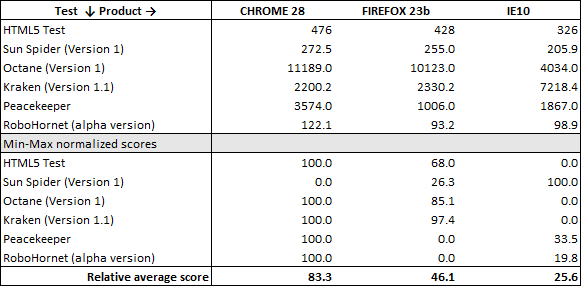
Conclusions
Usage share statistics and test scores provide a consistent ranking:
Based on this ranking, the Google Chrome / Chromium is considered the adequate browser for WUI development and testing.
An alternative option is to use Mozilla Firefox: if the WUI works correctly in this browser, it will most likely work correctly on Google Chrome.
These two browsers also comply with the defined Constraints and are supported in the selected Operating Systems.
Footnotes
| [1] | Please note that the average relative score reflects the comparison between the 3 products, not among all available browsers. Absolute test results are dependent on hardware and configuration: all tests were made on a Windows 7 (64-bit) machine, running an Intel Core i5-2410M processor, 6GB RAM, and an NVIDIA GeForce 540M graphics card. Firefox 23 beta version was tested instead of the current production version due a (fixed) bug that affected Robohornet’s descendant selector test in Firefox 22. |
